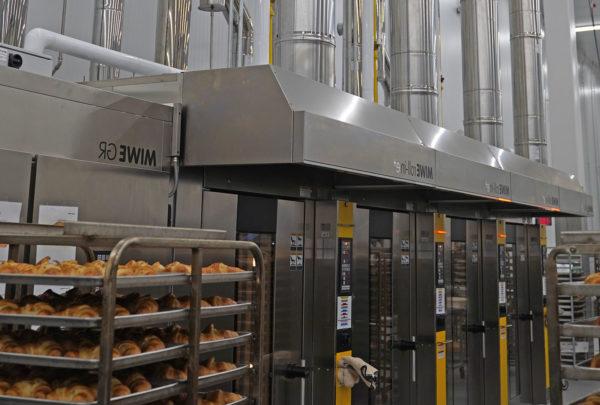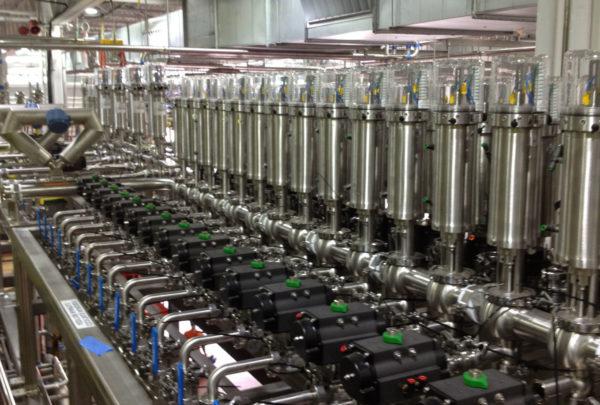How do you translate process design knowledge to other disciplines in a timely fashion? Our process-engineering team must demonstrate to the client exactly how their new systems will work.
To avoid potential miscommunication, we need a tool that:
- Represents complex process operations visually.
- Conceptualizes the engineering on paper.
- Provides a deliverable which can be reviewed more quickly and accurately graphically than a text document.
Therefore, our process team developed an application to highlight flow paths superimposed on a drawing or photo to reflect the process operation.
Why Color-Coded Sequences
When developing the application, each valve state is shown and highlights the flow path downstream of the valve, to reflect one step within a sequence. When stacked together, these color-coded sequences illustrate the progression of the equipment from the process operations to clean in place (CIP) and steam in place (SIP) operations, back to the “ready for process” mode. The tool accommodates operations of any length.
When viewed as a sequence, several things happen:
- Transitions make more sense as the equipment moves between steps.
- Gaps in the automation become obvious.
- Monitoring sterile boundaries and product protection strategies become visible.
- A deliverable is generated, which can be understood and used by process engineers, automation engineers, quality personnel, management, operators, etc.
Documents can be generated from multiple sources. For example, historical data of valves and pumps can be trended and imported into the base drawing; design documents can be transcribed to build the drawing set; or the drawings can be built from scratch to create the ideal operating method.
How Automation Documentation Works
Automation documentation in the form of descriptive text or pin charts is commonly disconnected from the visual equipment drawing(s) that were used to generate them in the first place. Often, these documents are built in several layers.
First, the process engineer transcribes their knowledge into a simple step-by-step description to define the base requirements. The base requirements may be further developed into functional requirements by an architecture and engineering firm.
Next, the functional descriptions are built into design documents, which are heavily laden with the technical control system jargon to assist programmers with implementing the code. Gaps can be created in each of these steps, as different engineers are involved with each step of development and errors accumulate when the written word is interpreted and translated differently by different people. These gaps are not normally discovered until running the system, or by looking at the system as a whole.
Our team developed this tool to be more explicit and to elicit better information from the primary engineers; hence, a better working product is delivered. Applications include process, steaming, cleaning and manual operations.
Redirecting the Focus Back to Equipment Capabilities
The visual representation is on a single base drawing, keeping the equipment (and its limitations) in primary focus. The automation deliverable is completed behind the scenes, so the emphasis remains on the equipment capabilities, not a chart or Word document.
From years of experience, our team has found that a color code sequence can be reviewed by engineers in a matter of minutes – simply by establishing the state of all devices in the first step. Then, following the flow paths from page to page.
By color coding, you can reduce automation development time, commissioning time and overall cost and schedule.
If you would like to learn more about applying color codes to your project, please contact Senior Process Project Manager, Mike Byron at michael.byron@uupt.net.


























































